Studio Visit
In His Upstate New York Studio, Stefan Bondell Paints Day and Night, Fueled by Hudson River Light and Copious Amounts of Sugar
"Dark Marks"—the artist's first solo exhibition with Vito Schnabel Gallery—is now on view in New York.
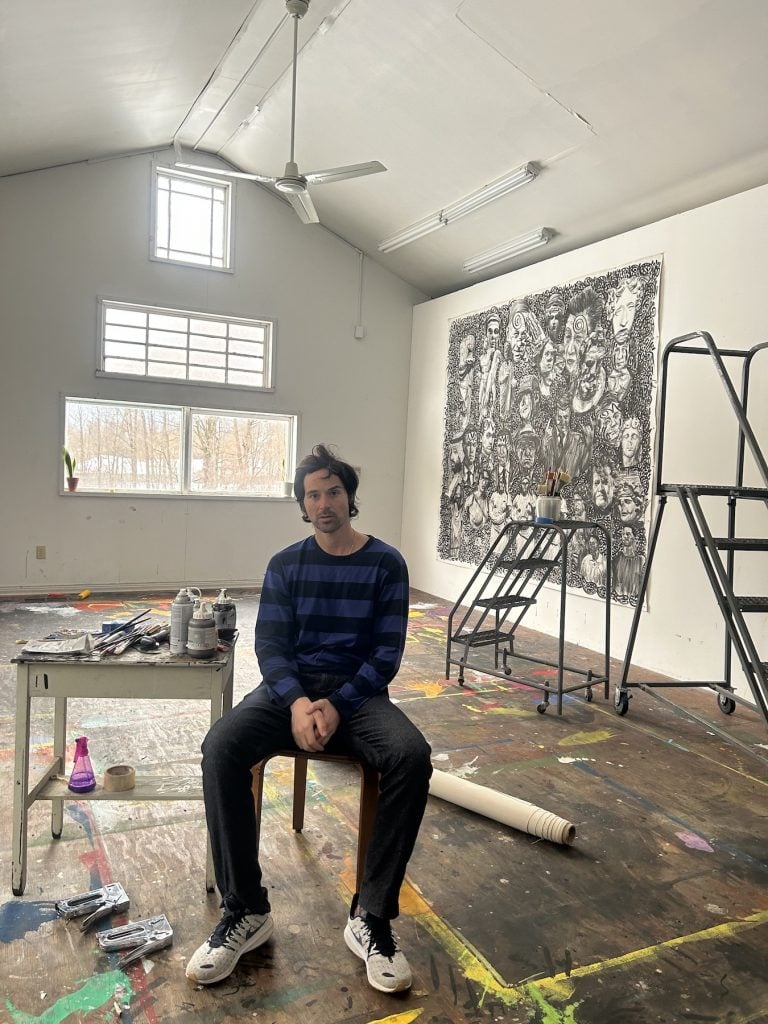
"Dark Marks"—the artist's first solo exhibition with Vito Schnabel Gallery—is now on view in New York.

Katie White

New York City’s urban terrain of concrete, asphalt, and steel has long inspired Stefan Bondell, a native of the city, known for his defined obsidian palette. Over the past few years, however, Bondell has swapped Manhattan’s streetscapes for wooded vistas, working in a church-like studio in Germantown, New York, nestled in the scenic Hudson Valley.
Over the few past months, Bondell has spent long days and nights in the double-height studio, working on his latest series of paintings. Now on view in “Dark Marks,” Bondell’s first solo exhibition with New York’s Vito Schnabel Gallery, these swirling compositions draw from the mythic power of art history, featuring classical Greek and Roman sculptures in dreamlike tempests with contemporary socio-political imagery. Some of these ancient sculptures might be recognizable to hawk-eyed museum-goers—the artist has pictured several from the collection of the Met, a museum where he’s spent many hours.
The Baroque era is another influence with his evocative use of light and shadow offering a contemporary perspective on the centuries-old compositional strategies of chiaroscuro and tenebrism. Bondell’s works, too, are shaped by an era of socio-political, financial, and cultural tumult, but the energetic artist injects his work—and studio—with a dose of quirky humor even so. Among the more unusual elements in his studio are a giant plastic black swan—a reminder of the unexpected—and bags of shredded United States currency.
Recently, Bondell welcomed us into his upstate studio, where he listens to Bob Dylan, drinks black coffee from a local bakery, and tries to capture that “on fire” feeling.
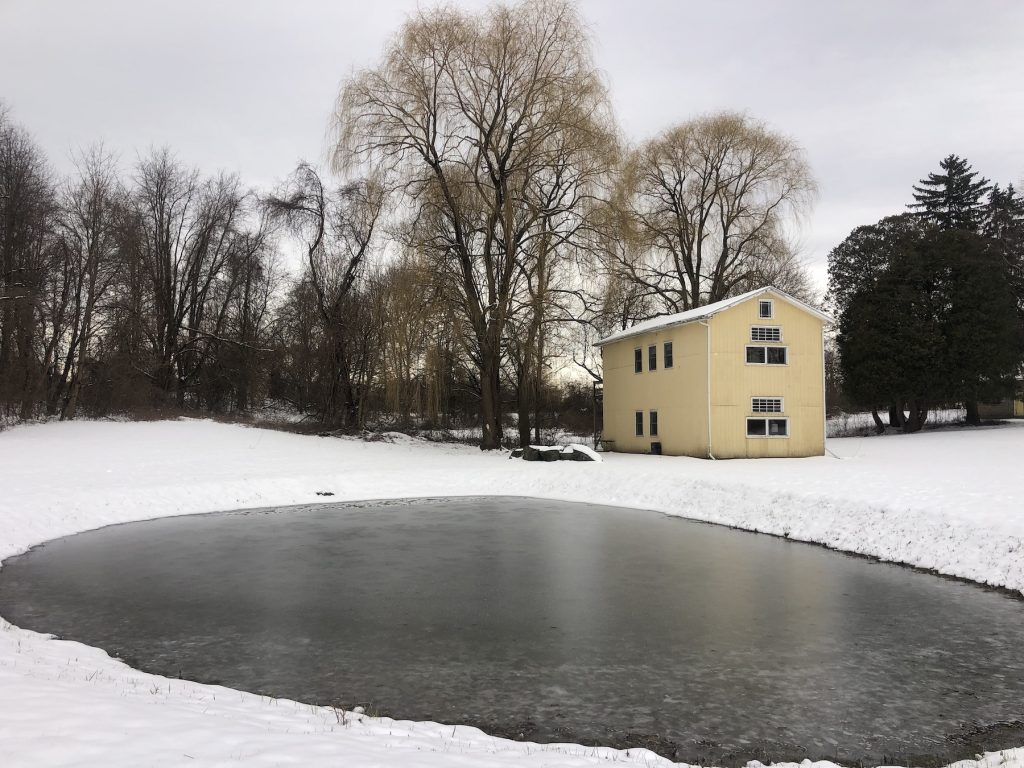
Stefan Bondell’s studio in the scenic Hudson Valley. Courtesy of the artist.
Tell us about your studio. Where is it, how did you find it, what kind of space is it, etc.?
Since the beginning of 2020, my primary studio has been in Germantown, New York, in the Hudson Valley. It is a small church-like structure facing a little pond under a weeping willow. It was built in the 1970s by a senior citizen couple who painted Hudson River School-inspired landscapes. The wife would paint on the top floor and the husband beneath her. There are windows on four sides and the light is very special and unique to the Hudson Valley.
I also maintain a small studio in Manhattan, which keeps me connected to where I am from. The work in my current show, “Dark Marks,” was created all over New York State. The first painting I made for this show, Beheading Treason was started in the bedroom of the American critic Harold Rosenberg. Ugo Rondinone gave me the space in the East Village to work in for two months before it underwent renovation.
On March 11, 2020, I left the city and gave up my apartment. Then, I moved around to different places that friends had left empty across New York. The paintings were made in the East and West Village, Uptown, Brooklyn, Queens, Nassau County, and in my studio in the Hudson Valley. The different spaces I worked in throughout the pandemic and this tumultuous time informed my work heavily. I have always set up studios in other spaces I have inhabited, but the experience pushed this practice to the limit.
What made you choose this particular studio over others?
I have painted in the dense urban environment of New York City throughout my life and the city’s black and white and silver and grey tones are heavily embedded in my sensibility. I feel very fortunate to have a studio in the middle of nature and the specific tonalities of the Hudson Valley. It allows me to work in seclusion and escape my own sense of self and identity in the streets of the city. I now have this interior dialogue with the New York School and the Hudson River School, as it is my belief that American painting is at its essence landscape painting, and I am and have always been a “New York Painter.”
Do you have studio assistants or other team members working with you? What do they do?
I have always painted completely alone. I am not interested in having assistants touch my canvases, or even having another person around when I paint. Painting is a form of meditation and a transfer of energy from the mind and body into the physical world. My works are about leaving marks and imbuing that spirit and energy into materials and ideas. It is wonderful that some artists use teams of assistants and have their work produced in foreign countries. These people produce paintings, but that is not my path.
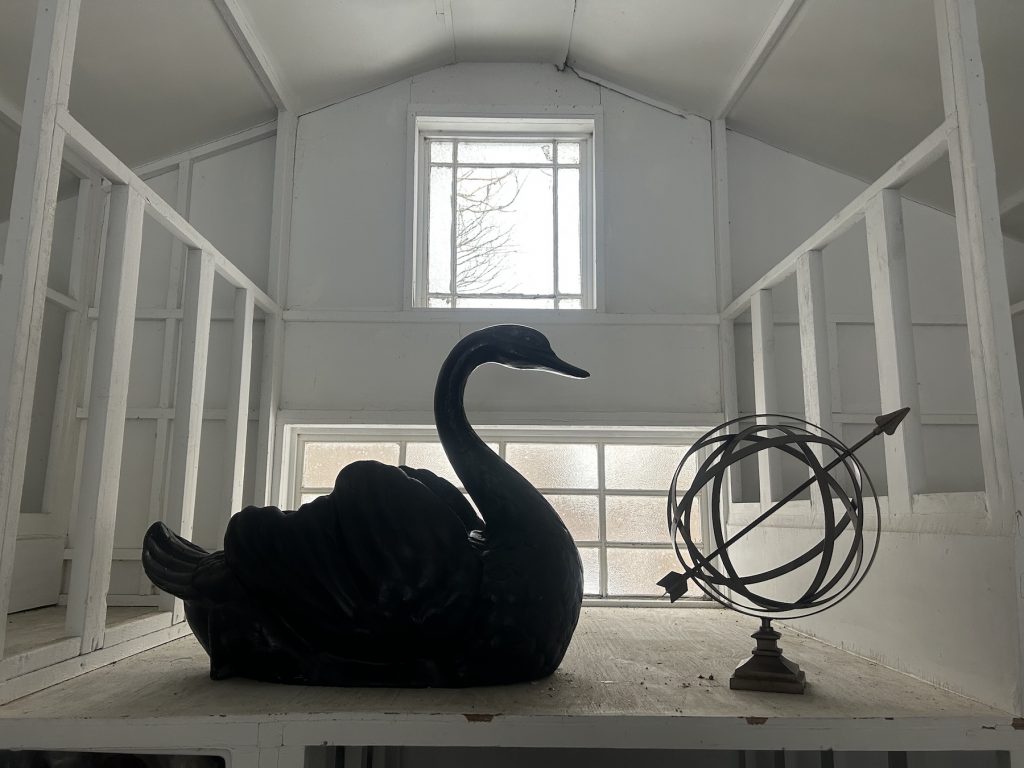
The large black swan and armillary sphere Stefan Bondell keeps in his studio. Courtesy of the artist.
How many hours do you typically spend in the studio, what time of day do you feel most productive, and what activities fill the majority of that time?
I work very long hours in the studio when I am in full painting mode. I think of painting like an athlete does when the season is going, all I am focused on is the work. I start at 8 a.m. and go until about 2 p.m. Then I will start up again at around four in the afternoon and go until two in the morning. There is no set schedule or sense of time when I am fully involved in a painting. Sometimes I will wake up in the middle of the night and get going. It is always important to me to live next to my work for this reason. The adrenaline and necessity of the idea drive the hours. I often draw forms and figures more in the morning and late at night and spend more time making marks and shadows during the daytime hours. But there is no clear rationale, except for the emotional charge I feel towards the subject matter, that motivates me through the long hours and often physical discomfort.
What is the first thing you do when you walk into your studio (after turning on the lights)?
I usually drink a cup of coffee and set up my palette, tools, and paints. I clean up some detritus and ashes from the night before. I move some chairs and ladders around, and then put on the music or news I will listen to. I never sit when I enter the studio.
What is a studio task on your agenda this week that you are most looking forward to?
I am looking forward to finishing two paintings of these disturbing faces. Half of the figures in these paintings deserve indictments or the guillotine depending on your perspective, so I am most looking forward to taking them off the wall and rolling them up.
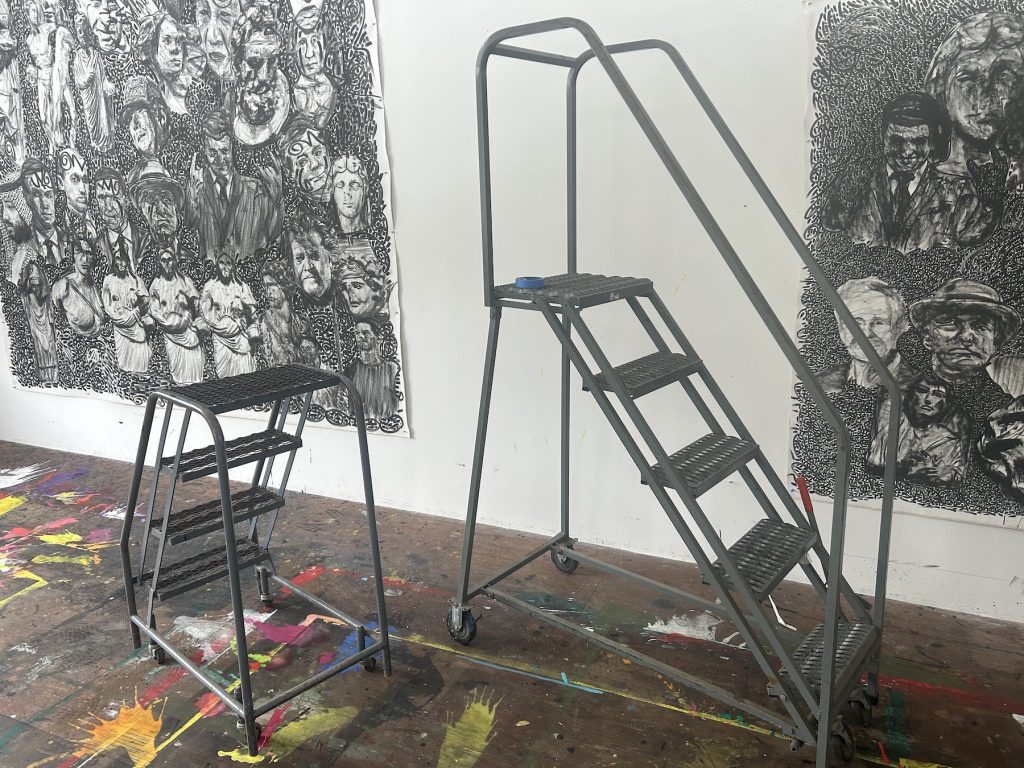
Stefan Bondell’s prized rolling ladders. Courtesy of the artist.
What tool or art supply do you enjoy working with the most, and why? Please send us a snap of it.
I love my ladders. They are industrial metal rolling ladders. They come from my parents’ postcard company. People spent years counting and packing postcards on them, and I love to think I go up and down them making marks in space to create images of our time and history. They are a continuation of my family narrative.
What kind of atmosphere do you prefer when you work? Is there anything you like to listen to/watch/read/look at etc. while?
I love to paint in bare spaces with no clutter around. I listen to Bob Dylan and Philip Glass. Also Jamaican Dancehall, Nas, Biggie, Louis Armstrong, Nina Simone, Aretha Franklin, Buena Vista Social Club, Fela Kuti, and Mozart. When I am not listening to music in the studio I am always listening and watching MSNBC and CNN.
How do you know when an artwork you are working on is clicking? How do you know when an artwork you are working on is a dud?
When a painting is working, your intuition kicks in and you can feel it in your bones that something special is going on. It is a magical feeling that fills you with adrenaline and pushes you to go forward. Sometimes it can feel like when they say an athlete is “on fire” and they are just shooting or swinging without thinking, they can’t miss. Everything is working. There is no sense of time, you are just suspended in space. When you are working on a dud the exact opposite is true. Time moves so slowly and you feel so conscious of every mark and gesture. You can feel every pain and awkwardness of your body and the material. It is absolute torture. The duds can get me very down, but the victories can give you the extreme exhilaration that can keep you afloat for days, keeping you on this treacherous and curvy road for a lifetime.
When you feel stuck while preparing for a show, what do you do to get unstuck?
I don’t believe in getting stuck or unstuck. The world does not need more paintings, it needs more ideas and as long as you keep your mind active and keep the materials and body moving you can get yourself through the hard days.
What images or objects do you look at while you work? Do you have any other artist’s work in your studio? If so, please share a phone pic and tell the story behind it.
I keep a large plastic black swan in the studio up high, perched on top of my painting rack. It reminds me to always expect the unexpected and realize history and life can change in an instant. Our stories are made of “black swans.” Swans can be quite aggressive and nasty creatures, as well as being elegant and extremely beautiful animals, both on the land and the water.
What’s the last museum exhibition or gallery show you saw that really affected you and why?
I have seen the Mayan show at the Met a number of times these last few months. I have painted one or two of the statues in the exhibition that are part of the museum’s permanent collection. One of the statues is in my painting Death of the Body Politic, which is up in my show at the moment. The statues are incredibly powerful and emanate divinity. I also spend many hours in the Greek and Roman Sculpture Court at the museum, where the display has changed fairly often in the last few years. Many of the statues there have found their way into my paintings in “Dark Marks.” Once you paint these sculptures they become very close to you, almost like family members that you go visit and reflect on your aging process in their reflection. Particularly since they are ancient, and as close as we can get to the infinite in New York.
Where do you get your food from, or what do you eat when you get hungry in the studio?
I drink a lot of black coffee and eat a lot of baked goods from the bakery in Tivoli here in the Hudson Valley. I have a baked goods addiction. I usually eat oversized chocolate chip cookies and double chocolate brownies with walnuts. I always feel like I need sugar to keep going when I am painting.
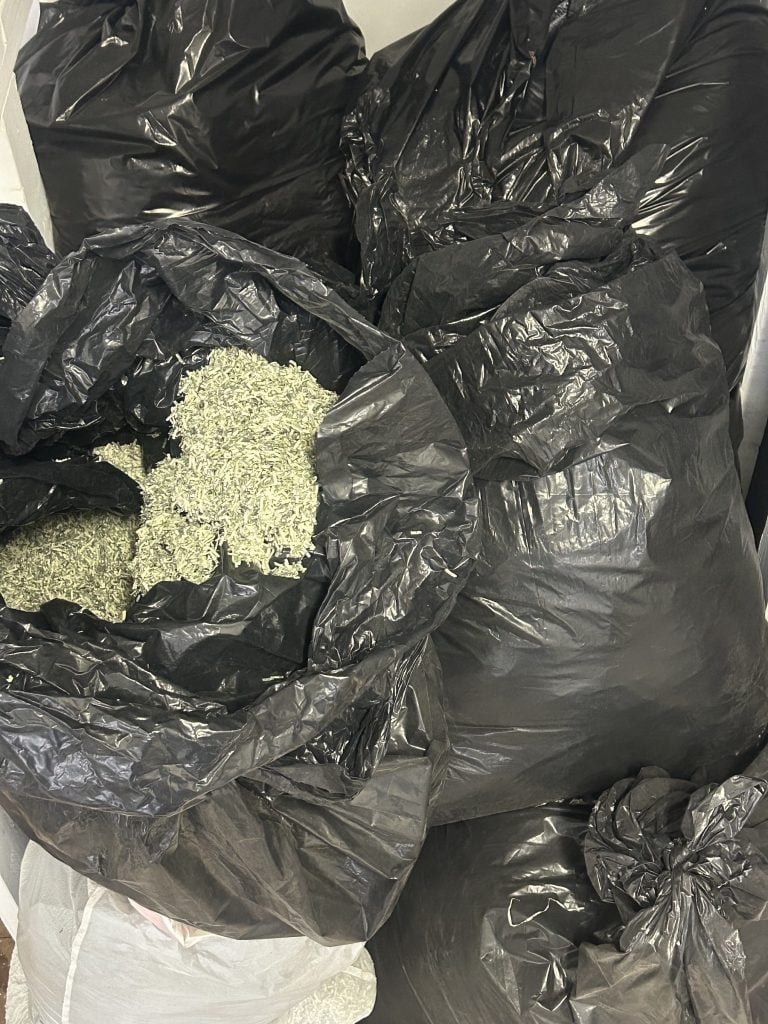
Shredded United States currency from the Federal Reserve. Courtesy of the artist.
Is there anything in your studio that a visitor might find surprising?
I have many large contractor garbage bags full of shredded United States currency from the Federal Reserve. I used this as material for a body of work I made, and once covered the floor of a gallery with millions of shredded dollars.
What is the fanciest item in your studio? The most humble?
The fanciest item in my studio is an armillary sphere. The sphere is an early astronomical device for representing the circles of the heavens, a celestial globe. I keep this up high on my painting rack next to the black swan.
The most humble item I have is garbage bags of my sneakers from the last 25 years. I feel guilty about throwing them out and have planned to use them in a piece I hope to make one day called The Steps I Have Taken.
What’s the last thing you do before you leave the studio at the end of the day (besides turning off the lights)?
Turn off the music or news, drink some water, and finally take a seat after many hours of standing so I can take a step back and see what I have done. Often it feels like stepping out of a trance. Sometimes I take a picture with my phone so I can look at the image on a screen before I fall asleep to make sure it was not all a dream.
What do you like to do right after that?
I usually take off all the clothes I have been wearing in the studio right away and jump in a very hot shower. After that, I try to stretch a little bit because my body is often in quite a bit of pain and discomfort from hours of making marks and gestures, and then I collapse flat on my back.
“Dark Marks” is on view at Vito Schnabel Gallery, New York, through March 18, 2023.